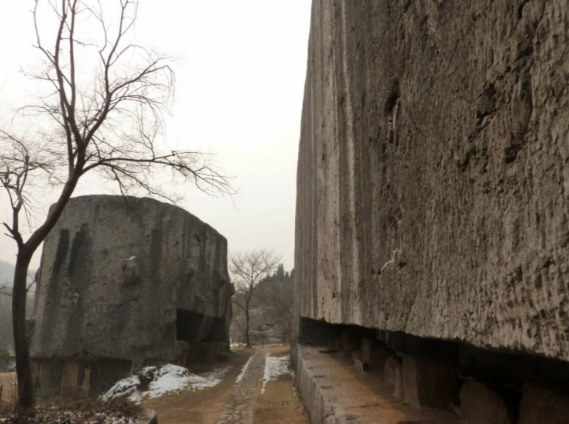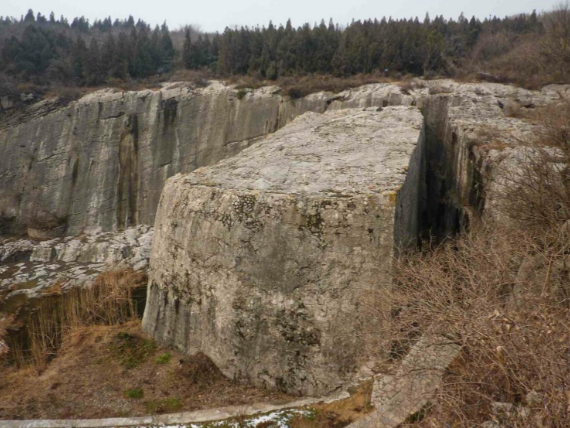Unveiling the Enigma: Exploring the Origins of the ‘Giant’ Ancient Megaliths at Yangshan Quarry
The world is filled with remnants of ancient civilizations, each with its own enigmatic secrets waiting to be unraveled. Among these enigmas is the Yangshan Quarry, an extraordinary site located 20 kilometers east of Nanjing, China, on the imposing Yanmen Shan mountain. This quarry stands as a testament to the incredible feats of ancient engineering and leaves us pondering the origins of its colossal stone remnants.
One of the most captivating features of the Yangshan Quarry is an unfinished stele that dates back to the Ming Dynasty. During the reign of the Yongle Emperor in the 15th century, an ambitious project was initiated to create a giant stele for the Ming Xiaoling Mausoleum, dedicated to the Emperor’s deceased father. The quarrying process involved cutting three separate components from the mountainside, which were intended to be assembled into an awe-inspiring monument.
However, as the stone cutting progressed, a significant challenge emerged: the blocks proved too immense to be transported and installed at the mausoleum. Faced with this obstacle, the ambitious project was ultimately abandoned, leaving behind three unfinished stele components that still reside within the quarry.
The dimensions of these components are awe-inspiring. The Stele Base, measuring a staggering 30.35 meters in length, 13 meters in thickness, and 16 meters in height, weighs an astonishing 16,250 metric tons. The Body, at 49.4 meters in length, 10.7 meters in width, and 4.4 meters in thickness, weighs 8,799 tons. Lastly, the Head stands at 10.7 meters in height, 20.3 meters in width, 8.4 meters in thickness, and weighs 6,118 tons. If assembled, the stele would have stood over 73 meters tall and weighed over 31,000 tons, making it a colossal engineering marvel.
The magnitude of this endeavor raises intriguing questions. How did the master masons of the time envision transporting these massive blocks over a distance of 20 kilometers through challenging mountainous terrain? It is a perplexing puzzle that challenges our understanding of ancient engineering capabilities.
Another puzzling aspect of the Yangshan Quarry is the irregularity in the cuts made on the stones. The varying sizes, shapes, and placements of the cuts suggest that they were never intended to be assembled or moved. Had they been part of a transportable structure, a more uniform approach would have been taken. This raises further questions about the purpose and original intentions behind the stone cutting.
Beyond the unfinished stele, the site itself presents a striking spectacle. The vast quantities of stone removed from the area indicate a massive effort in quarrying. However, what is truly perplexing is the intentional creation of towering, flat walls that remain within the quarry. These walls were not typical of ancient quarries, leaving us to question the motives behind their construction.
As we examine the mysteries of the Yangshan Quarry, several possibilities emerge. It is plausible to consider that external assistance was involved in the transportation of these immense stones, perhaps employing techniques that have since been lost to history. Alternatively, it is intriguing to contemplate the notion that ancient civilizations possessed knowledge and methods for moving and utilizing heavy objects in construction, yet failed to document these techniques in written records.
The Yangshan Quarry stands as a captivating testament to ancient engineering prowess and fuels our imagination with possibilities. It challenges our understanding of ancient civilizations and their capabilities, leaving us to ponder the hidden wisdom and techniques that may have once existed. Exploring sites like this reminds us that there are still many secrets waiting to be unearthed, encouraging us to delve deeper into the mysteries of our past and seek answers to the r
Hits: 2






